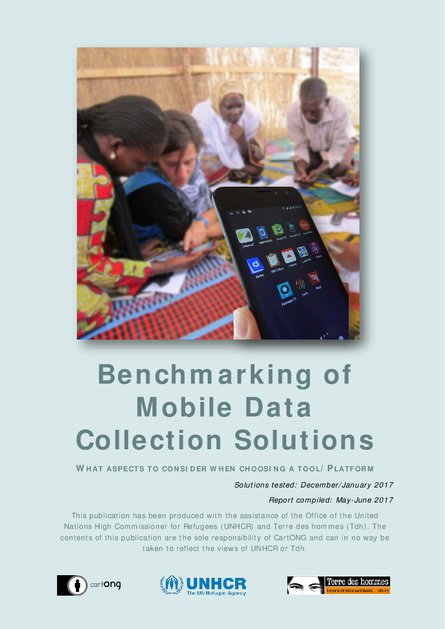
This resource was originally published on the CartoBlog in 2017 by CartONG. It was transferred to the IM Resource Portal in May 2021. The CartoBlog will be decommissioned in early 2022.
Humanitarian response operations as well as development projects require accurate information to use their resources in the best possible manner, be it to determine the urgent needs of communities affected by natural disasters or conflict, or to ensure that people and households receive ongoing support to improve their situation.
In the best case, making decisions based on no, limited, outdated or incorrect information means that time and money is lost. In the worst case it can mean that people’s lives are irrevocably harmed.
Mobile Data Collection (MDC) can help improve the quality of data, information, analysis and decision making. By using one of the MDC platforms described in this report, organizations can collect data faster and with fewer errors than on paper. The sharp decline in hardware costs for mobile phones also means that MDC is often cheaper than doing a survey on paper.
As the report shows, the question is no longer if organizations should use MDC, but how. The short profiles for each solution, as well as the detailed table at the end of the report, show the main strengths and weaknesses of 15 different platforms.
The most significant differences between the tools tend to fall into three different categories:
- How easy is it to import or export data and forms to and from other applications?
- Does the platform support individual case management and/or monitoring situations over time?
- What level of data analysis is supported out of the box?
There is no single solution that can fit all possible needs and the report advises against trying to force a single solution on staff. Instead, the report recommends that organizations either agree on a small pool of approved platforms from which staff can choose, or on a preferred solution, from which teams can diverge if necessary. This approach ensures a blend between uniformity – which is important to maximize familiarity, compatibility and support for the platform – and flexibility, which enables teams to respond quickly to operational needs and changes in the MDC marketplace.
This publication has been produced with the assistance of the Office of the United Nations High Commissioner for Refugees (UNHCR) and Terre des hommes (Tdh). The contents of this publication are the sole responsibility of CartONG and can in no way be taken to reflect the views of UNHCR or Tdh.